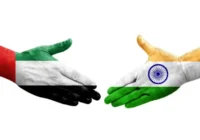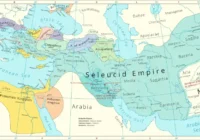India and Pakistan can either make peace or continue in an endless cycle of violence.
On February 14, a suicide bomber killed more than 40 paramilitary police in Indian-administered Kashmir. Jaish-e-Mohammed (JeM), a militant group based in Pakistan, claimed responsibility for the attack. While Islamabad has denied having any role in the incident, India has long accused Pakistan of backing insurgents.
The way India chooses to respond to the attack in Pulwama has consequences for its future and its relationship with Pakistan. In light of a speech by Pakistani Prime Minister Imran Khan on February 19, India has a chance to consider the offer he made. While defiantly warning against an attack on Pakistan, Khan said the long-running dispute over Kashmir between Pakistan and India could only be “solved through dialogue.” He added that Pakistan is ready to cooperate in an investigation and would hold those accountable if evidence is found that anyone from his country was involved in the incident.
India said his speech was inadequate, lacking in offering condolences for the victims’ families and that JeM’s claim of responsibility was proof enough that Pakistan was involved. From India’s point of view, this perception of the inadequacy of Khan’s offer of dialogue is understandable given the magnitude of loss encountered. Instead of dialogue, the Indian government seems to be intent on revenge. Its air force has already struck deep into Pakistan.
Khan’s offer of dialogue might have been more credible if he had acknowledged the suffering of Indians. But let us put aside for a moment the sentiments of sadness, fear, anger and resentment that we are justifiably feeling after the Pulwama attack. The relevant question to ask for India is whether the offer is good enough to get both sides to the negotiating table.
How Should India Respond?
To decide how India should respond, we need to step back and look at the Pulwama incident in the context of the bigger picture context. Since partition in 1947, tensions between India and Pakistan have increased. They have fought three bloody wars. Hateful language is commonly used for the other side in mainstream media and by politicians on both sides of the border.
India and Pakistan have paid a huge price for the unending conflict. Khan acknowledged in his speech that it has cost Pakistan tens of thousands of lives and billions of dollars. He also said it is in his country’s interest to address the conflict. India is in the same situation and has lost countless lives too. So, it is also in India’s interest to move toward a peaceful solution.
As hard as it would be, this is an opportune time for both sides to rise above the mindset of right and wrong, judgment and blame, and instead come together and work to build peace. The media, in both countries, bear a huge responsibility in the way they report stories and play them over and over. They can either promote conflict or help de-escalate it.
India must take its cue not from the media or its politicians, but leaders who have worked tirelessly for peace. More than ever, Mahatma Gandhi is a good role model for the country. He recognized that violence was subject to a universal law. When used as a means to bring peace, violence always leads to more violence. Nonviolent means to bring peace lead to more peace. So, if we respond to violence with violence, we would never reach peace.
Looking at historic and contemporary examples in the world, peace leaders have been clear on one principle: the antidote to violence is nonviolence. Desmond Tutu, the South African anti-apartheid activist and Nobel Peace Prize winner, defines violence quite simply: words or actions that separate us are violent and those that bring us closer together are nonviolent.
If we apply this definition to the words that Indian leaders are using in response to the Pulwama incident, their violent rhetoric will escalate the conflict. Pakistan is doing the exact same thing by using a similar tone. Of course, a tragedy where numerous families have lost loved ones makes us feel anger, resentment and hatred. But if we pause and reflect, we can clearly see that to address the problem at its root, we need to seriously consider responding non-violently. This is in India’s self-interest. It may sound a cliché, but it is easy to observe from past experiences that if India responds to hate with hate, we will secure more violence for our country in the future.
Pros and Cons of India’s Response
In weighing up which India should respond, the question to consider is what the pros and cons of retaliation compared to a nonviolent approach are? If India retaliates, the pro is we may be able to stem the immediate tide of anger and resentment in the country arising from the loss of lives, as well as derive solace that we have exacted revenge. The con is we would just contribute to another cycle of violence in the long run that has huge costs for us. If India chooses a nonviolent response, the pro is we may end up shifting the trajectory of the relationship between the two countries to a path of sustainable peace. The con is such a response may look weak, but this is not really so. In Gandhi’s view, nonviolence requires much more strength than violence.
A nonviolent response does not in any way mean condoning the Pulwama attack or letting go of seeking justice and accountability. Investigating and holding the perpetrators accountable need to be part of any solution toward peace. However, if done carefully, such a response holds the possibility of a win-win situation for both sides in the long term. This is the power of a restorative justice approach that holds the potential to shift the subcontinent from a destructive to constructive trajectory.
On the other hand, a violent punitive response, can provide short-term victory for one side, but both of them will lose in the long run. The parents of the suicide bomber in Pulwama have stated their son took the route of violence after being beaten up by the Indian army a few years ago. This is yet more proof that violence begets more violence.
India can make the choice of responding with empathy to the seemingly deficient Pakistani offer of dialogue in order to get the two countries to the negotiating table. Any international dispute that has been settled with mediation and resulted in a win-win outcome that is sustainable has involved responding to the other side with empathy and using some form of nonviolent communication. This is at the heart of a restorative option that needs, at the very minimum, empathy because it requires understanding where the other side is coming from and finding common ground. This does not imply condoning or minimizing the gravity of what has happened.
James O’Dea, former Washington office director of Amnesty International, writes in a post on Facebook: “It is a fundamental basis of conflict resolution that you must give the other party the space to be the very best person they can be. If you confine the other person to the very limited view you have of them you will never have dialogue or a breakthrough in communication with them.”
Using a restorative approach would mean we fully denounce the Pulwama attack and, at the same time, take up the offer of dialogue without compromising on investigation and accountability. Making peace is by no means easy in the face of such a destructive event, but it is possible and worthwhile because the stakes are very high.
In 2016, Colombian President Juan Manuel Santos said in his Nobel Peace Prize acceptance speech that it “is much harder to make peace than to wage war.” It is time that the government, media and people of both India and Pakistan took the hard option.
The views expressed in this article are the author’s own and do not necessarily reflect Fair Observer’s editorial policy.
Support Fair Observer
We rely on your support for our independence, diversity and quality.
For more than 10 years, Fair Observer has been free, fair and independent. No billionaire owns us, no advertisers control us. We are a reader-supported nonprofit. Unlike many other publications, we keep our content free for readers regardless of where they live or whether they can afford to pay. We have no paywalls and no ads.
In the post-truth era of fake news, echo chambers and filter bubbles, we publish a plurality of perspectives from around the world. Anyone can publish with us, but everyone goes through a rigorous editorial process. So, you get fact-checked, well-reasoned content instead of noise.
We publish 2,500+ voices from 90+ countries. We also conduct education and training programs
on subjects ranging from digital media and journalism to writing and critical thinking. This
doesn’t come cheap. Servers, editors, trainers and web developers cost
money.
Please consider supporting us on a regular basis as a recurring donor or a
sustaining member.
Will you support FO’s journalism?
We rely on your support for our independence, diversity and quality.






